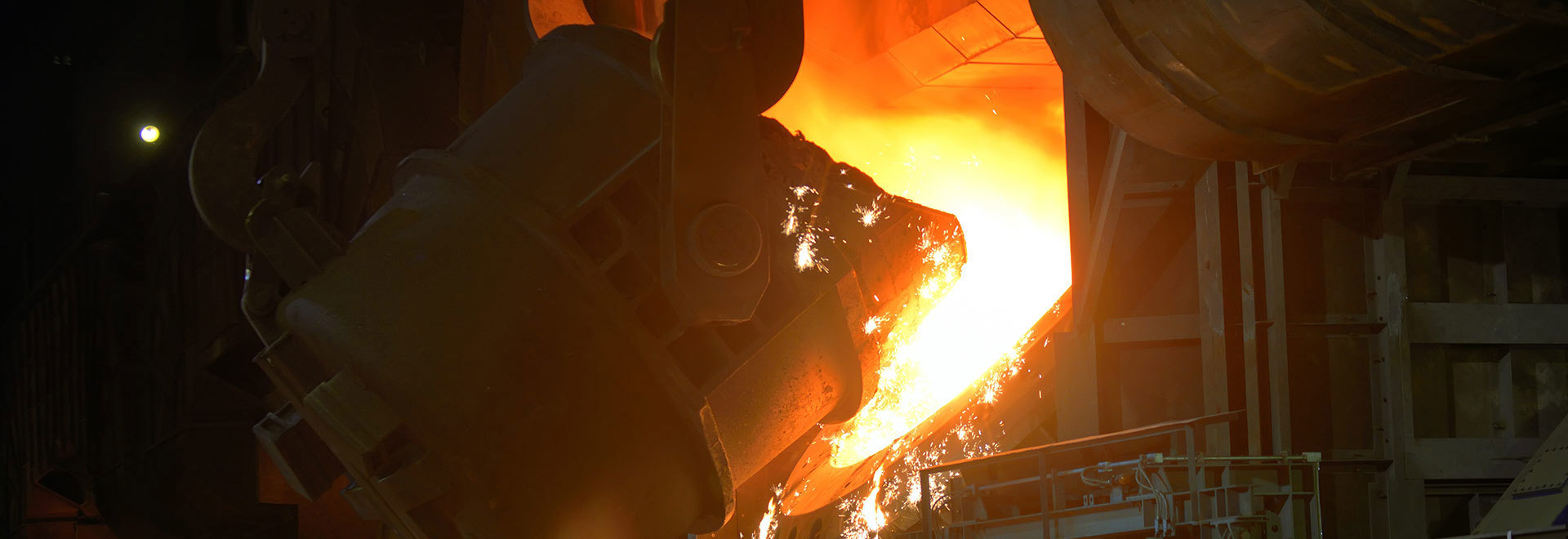Process Experiment of Lost Foam Casting Iron Cap for High Voltage Wire
Release time:
2020-11-26 18:59
Source:
Process Experiment of Lost Foam Casting Iron Cap for High Voltage Wire
(Zhang Jiajun Hebei Ruiou Lost Model Technology Co., Ltd. Xingtai City, Hebei Province 054000)
Abstract: The insulating iron cap for high-voltage wires was originally produced by coated sand casting, withlost foam castingThe advantages of production methods in terms of material labor costs and operating energy and environmental protection, people began to try to use lost foam casting to produce such castings. This paper describes a variety of lost foam production of iron cap casting process practice, so as to explore the most suitablelost foam production casting process.
Keywords: iron cap, QT450-10, coated sand casting, lost foam casting, casting process
1: the use of iron cap
Iron cap is the circuit transmission, lightning arrester and substation accessories. The role of insulated and fixed (suspended) conductors in high-voltage overhead transmission and distribution lines.
2 Coated sand casting production mode of the original process
2.1 the characteristics of the original process
Two or four pieces are poured at one gate. The pouring position of the casting is to place the large mouth of the casting in a horizontal direction. The position of the inner gate is to introduce molten iron from the back head of the casting and have a riser at this position to collect slag and feed. Pouring temperature below 1350 degrees will appear cold phenomenon. In the production mode of coated sand, the process yield is about 40%, and the finished product rate is more than 90%.
Advantages: the process is more mature and stable, producing qualified castings. The use of coated sand, do not have to brush paint casting surface finish and more suitable for the production of such small castings.
Disadvantages: the use of disposable coated sand casting production, high cost. The environment of the molding core clamping process is poor, and only two pieces are poured at a time, and the subsequent grinding and cleaning are also relatively labor-consuming and time-consuming, and the process yield is low.
Melting and pouring of 2.2 original process
(1) Ingredients
Past iron: scrap steel: return charge = 40%:10%:50%
(2) Sphering and inoculation
The spheronizing agent is 8-3 type spheronizing agent produced by Pucheng Perseverance Metal Casting Material Co., Ltd., and the amount of spheronizing agent added is 1.3% of the molten iron composition.
Common 75SiFe was used as inoculant, and the addition amount was 1.1%.
Spubling inoculation method: bag bottom inoculation.
(3) Parameters of tapping and pouring
Table 1 Parameters of tapping and pouring
|
Blow temperature |
pouring temperature |
Pouring speed |
Total amount of pouring |
|
1560 ℃ |
1350-1450 ℃ |
3s |
5kg |
(4)QT450-10 composition and organization requirements
Table 2 QT450-10 composition
|
C |
Si |
Mn |
P |
S |
Mg residue |
|
3.6-3.7 |
2.5-2.8 |
0.10-0.15 |
≦ 0.05 |
≦ 0.025 |
0.06 |
Tissue requirements: as-cast pearlite content of about 20%. Carburizing bodies are not allowed, otherwise heat treatment is required to eliminate carburizing bodies.
2.3 product quality requirements
The casting is free of casting defects such as cold insulation, slag inclusion and sand inclusion. The strength and elongation of the test bar meet the requirements of the QT450-10 grade. Carburizing body is not allowed in the organization. The tensile test of the casting is 100% qualified.
3 Trial production of iron cap by EPC
3.1 Brief introduction of two kinds of castings in this test
In this process experiment, the iron caps of 120 model and Q70 model were made respectively. Because the market demand of these two models is the largest, and the wall thickness is the thinnest in all the iron cap castings of the customer, so choose these two models to do the experiment.
Model 120 iron cap: QT450-10 material, single weight 0.84kg, minimum wall thickness 3mm, casting tensile test requirements above 120KN, the overall structure of the casting is relatively compact in structure, the wall thickness of the fat belly part is 3mm, and the lip part is thicker.
Q70 model iron cap: QT450-10 material, single weight 0.95kg, minimum wall thickness 4mm, casting tensile test requires tensile force above 85KN. Due to the fierce competition and the improvement of customer requirements, the surface of the casting is not allowed to have obvious pits and protrusions, and the large round mouth is required to be rounded. In terms of structure, compared with the 120 type of iron cap, the overall structure is not so compact, the wall thickness of the fat belly part is 4mm, and the wall thickness of the lip part is thinner.
3.2 adoptionlost foam casting processDifficulties in production
1: casting wall thickness is thin only about 3-4mm, it is easy to produce cold.
2: the temperature is not easy to control, the thin wall thickness requires the pouring temperature to be improved, but it will affect the spheroidization effect, and may produce shrinkage cavity defects in the thick wall part of the ball head.
3. The lost foam string casting process scheme is adopted. The formulation of the scheme shall consider ensuring sufficient filling speed for each casting on the string during filling, and preventing the liquid metal from breaking in the process of filling the casting. If the corresponding filling speed is not guaranteed, the casting will definitely be cold shut and waste products will be caused.
4: The lost foam series casting process is adopted, and many white molds are hung on a string. After the white molds are bonded, they are easy to fall off and crack in the process of drying, coating and burying the box, and casting defects such as slag inclusion, sand sticking and sand inclusion are easy to occur. In addition, if there is no better process plan or fixed tooling for the string casting process, it is possible to use the box group type, which will reduce the production efficiency.
5: white mold opening lip parts of the roundness of strict requirements, prone to deformation.
6: Manufacturer requirements. Previously, castings have been produced by coated sand casting to ensure that the production rate of castings is above 40% and the yield of finished products is above 90%. In addition, the energy saving, time-consuming and labor-consuming aspects of the production of such castings by means of lost-energy mode should be greatly improved compared with the previous ones.
4lost-form processTest process
4.1 white model
The 120 type iron cap white mold model is a combination of upper and lower white molds as shown in fig. 4, which requires attention to the scrap of castings that may be caused by poor bonding at the parting surface.
4.2 coating and brushing
The use of the company's production of RO-QT coatings. Brush twice, the thickness of the coating is about 1mm, and the drying time of the two times is more than 12h.
4.3 casting process aspects and melting and pouring
The main idea: first explore the best casting position and the best in-gate opening position, and then combined with the characteristics of the string casting process in the sand box arrangement of the runner, runner arrangement, so as to adapt to the lost vanish mold process and meet customer requirements of the program.
4.3.1 Casting process scheme
Absorb the experience of the original casting process and then combine it with the lost foam casting process. For this production test, we have developed a total of 5 pouring position program.
From the point of view of finding the best pouring position and the opening position of the in-gate, first of all, we adopt the method of vertical pouring of model clusters, which is a common way for many small castings to be poured in series. The reason is that each layer of castings can be filled from bottom to top in order to ensure the pouring speed of each layer of castings and avoid turbulence.
The model cluster is provided with 4 layers, and castings are hung on each model cluster. The specific scheme is shown in Figure 6. A total of 5 series of model clusters were cast, and each layer of castings in each series of model clusters were placed in the same way, except that the upper and lower castings were placed in different order to avoid errors caused by different upper and lower positions of castings.
4.3.2 Melting and pouring scheme
(1): the batching side remains unchanged, pig iron: scrap steel: return charge = 40%:10%:50%;
(2): the addition of spheroidizing agent was increased from 1.3 to 1.4;
(3): Inoculant addition increased from 1.1 per cent to 1.2 per cent;
(4): the method of spheroidizing inoculation adopts the spheroidizing inoculation of the bag bottom;
(5) The parameters of tapping and pouring are shown in Table 3;
Table 3 Temperature for tapping and pouring of EPC
|
Blow temperature |
pouring temperature |
Pouring speed |
Total amount of pouring |
Negative pressure degree |
|
1580 ℃ |
1380-1450 ℃ |
5s |
30kg |
-0.06MP |
4.3.3 Pouring results
(1) The model clusters are poured in sequence, and there is no problem in the control of the pouring process, and there are no pouring problems such as slag inclusion and sand inclusion in the castings. Through the pouring experiment, it is concluded that the castings obtained by the pouring of the 5# scheme have no defects, and the other three schemes all have cold insulation defects, and the defect form is shown in Figure 7.
(2) Analysis of the advantages and disadvantages of various pouring schemes
1# pouring scheme
4 strings out of the 5 string model clusters poured were scrapped. Two inner gates are used to introduce molten iron. The inner gate is located on the front of the ball head, and the casting pouring position is inclined upward.
Analysis reason: the metal liquid is introduced with two internal gates to form two liquid flows. when the metal liquid is fused at the final filling part, the temperature of the metal liquid cannot reach the fusion requirement, resulting in poor fusion and cold isolation.
2# pouring scheme
All the five series of model clusters poured were scrapped, and two internal gates were used to introduce molten iron from the back of the ball head, and the casting pouring position was obliquely upward. The cold isolation position is mainly distributed on the upper part of the thin-walled fat belly at the pouring position, which is exactly the position of the final filling and fusion of the molten metal. The form and cause of the defect are similar to those of the 1# pouring scheme.
3# pouring scheme
The large mouth of the casting is placed horizontally, and the molten iron enters from the back of the ball head. Cold insulation defects appear at the final filling part of the casting and at the uppermost part of the pouring position. When the metal liquid is finally filled and merged, the temperature has not reached the fusion requirement.
4# pouring scheme
Cold isolation defects were found in 4 of the five model clusters cast. A single gate is used to introduce molten iron from the fat belly of the iron cap, with the casting pouring position facing up.
The defect is manifested as the problem of cold insulation and meat when smashing the gate. The position of cold insulation is opposite to the gate and is also the final filling part.
5# pouring scheme
All of the five model clusters were successfully poured. A single internal gate is used for bottom casting, and the metal liquid is introduced from the back of the ball head, and the pouring position is that the large mouth of the casting faces upward. As a result, there were no defects and the finished product was successfully poured.
Compare with other schemes and analyze the reasons: adopting a single internal gate can make the heat more concentrated than multiple internal gates, and there will be no metal liquid convergence in the filling process in the form of bottom casting with large mouth upward. Therefore, in contrast, this large mouth up single inner gate bottom casting process scheme is more suitable for this structure of the casting process requirements. And in the later experiment, even if the temperature is low, only 1370 ℃, the castings poured out have no defects, which shows the stability of this process scheme. The pouring temperature can be poured out from 1350-1450 ℃. From this point of view, it also leaves a lot of freedom for the actual production in terms of pouring temperature.
Summarizing the results of the above five series of pouring, the best pouring position and gate position of the casting should be 5# scheme. In addition, practice has proved that the 120 type of iron cap because of its compact structure, large mouth lip part of the thick, thin-walled area is small, so no matter what kind of casting process can be cast successfully. Therefore, the casting process is closely related to the casting structure. The finished casting is shown in Figure 8.
The composition, metallographic and tensile tests shall be conducted for the 4 finished products without appearance defects. The obtained composition, microstructure and stress all meet the requirements.
5 Series Cast Process
The next step is the connection scheme between the casting sprue and the runner so as to realize the string pouring and improve the production efficiency. The key to the string casting process is how to guide the molten iron to be introduced into the casting cavity in sequence, so that the necessary filling speed can be met in the filling process of each casting, and turbulence does not occur when the molten metal opens each inner gate in sequence, thus avoiding cold isolation defects. So as to find the best flow mode when the metal liquid is introduced into the cavity, and find the best process yield and yield point.
In this regard, we have developed five options to choose from.
According to the characteristics of casting process, we analyze the advantages and disadvantages of the above process. Among them, 1# and 2# cannot meet the requirements of sequential filling. When the casting reaches the end of the branch, the metal liquid has a long crawling distance and a large temperature drop. In addition, during the filling process, the lower layer is not full and the upper layer starts to fill, thus affecting the rising speed of the lower metal liquid, resulting in cold isolation defects, in the actual experiment, the cold barrier defects of the castings of the two processes are also large. Therefore, the two processes can not meet the production requirements in terms of process, and the scrap rate is high.
In the 3# scheme, we adopt the principle of simultaneous filling to design the runner. The reject rate of castings in the pouring result is higher than 90%, but the process yield is lower, about 45%, so this scheme is not satisfactory.
In the 4# scheme, we adopt the principle of sequential filling to design the sprue, and design the pouring process when climbing. The pouring result is the same as that of the 4# process scheme, and the yield is high. However, due to the large space in the sand box not being used, and the use of the main runner greatly reduces the yield, the process yield is less than 35%.
In the 5# scheme, we adopt the method of single-string single-casting, eliminating the runner above the process, thus improving the process yield, ensuring the finished product rate, and increasing the casting process yield to more than 65%, thus meeting the needs of customers.
6 Conclusion
The article on the iron cap castings from the original coated sand castinglost foam castingThe feasibility of the method is explored, from the initial search for the best in-gate location and pouring position to the back of the search for the best string pouring method, combined with the improvement of the smelting pouring process, so as to successfully explorelost foam casting productionFeasible technology of iron cap casting.
Hebei Ruiou Lost Foam Technology Co., Ltd.
Telephone/Fax:0311-89652816
Website:www.roepc.cn
Address: Ecological Street, Xinhua District, Shijiazhuang City, Hebei Province
Related News










